‘It could have been me’: As suicides hit close to home, these Arizona students took action
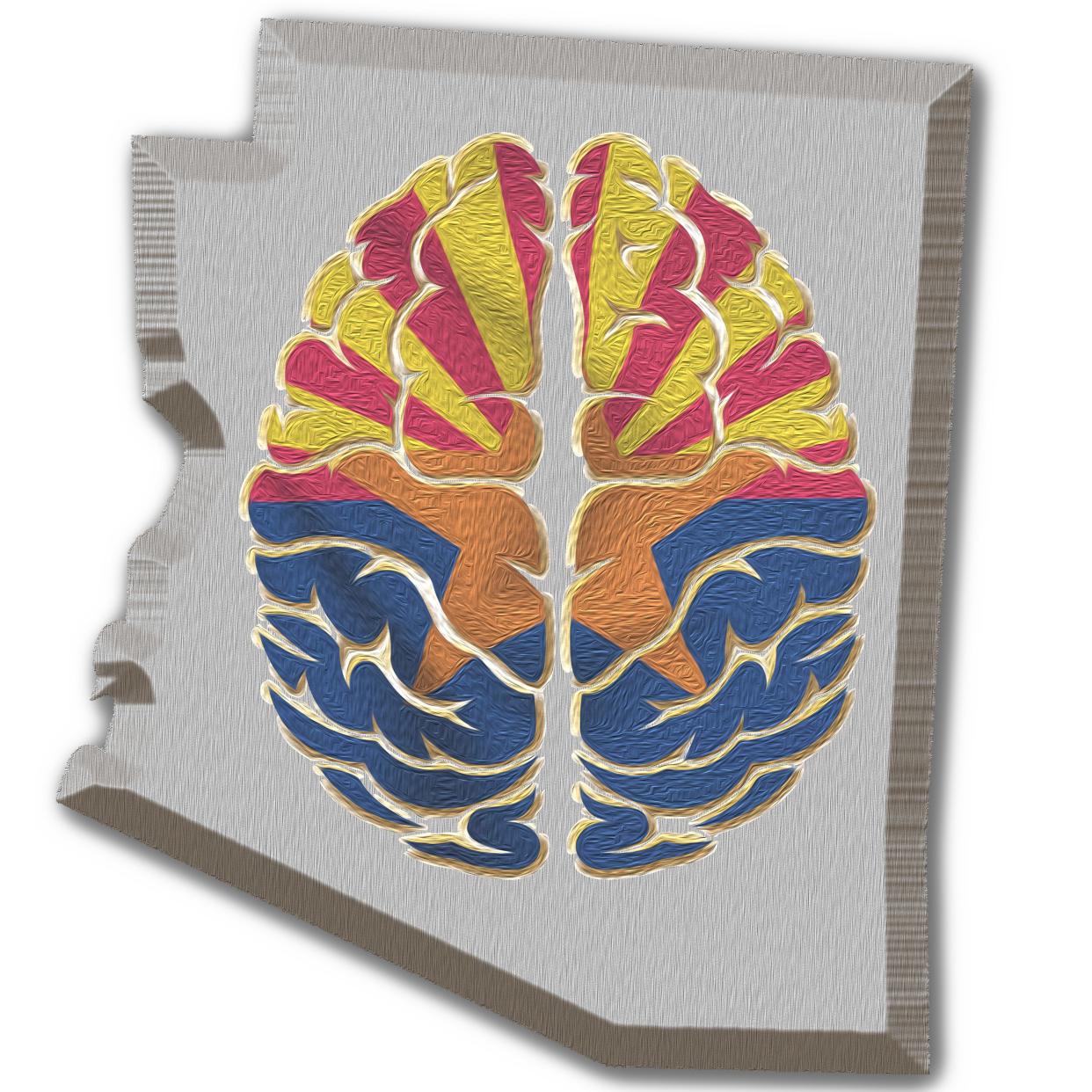
- Oops!Something went wrong.Please try again later.
Riana Alexander, a Chandler High School student, was in her junior year and recovering from her own mental health crisis in May 2022 when she discovered a girl at her school had died by suicide.
Then two more students in the Chandler Unified School District took their own lives. All three 15-year-olds died within an 11-day period. Alexander, devastated, grew intent on preventing more deaths among her peers.
“I was in the same place as them. I was contemplating taking my own life just a couple of months prior to that,” said Alexander, now a 17-year-old senior. “This girl goes to the same school as me, we do the same stuff. It could have been me. It almost was. It just, I don't know. It just sparked something.”
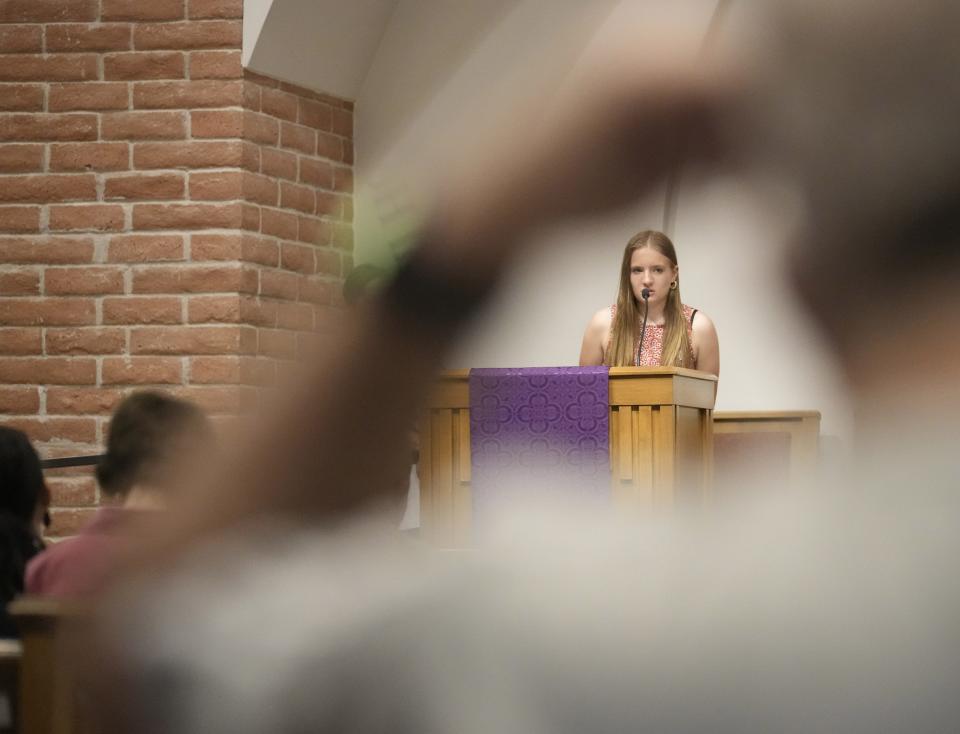
Alexander, a soft-spoken, studious teen, has become a force for change in her community in raising awareness about students’ mental health needs, most critically the need for school officials to intervene when kids are showing signs that they are at risk for suicide.
Schools in her district do a good job responding to crises, but she said where they fall down are in areas of prevention and what Alexander calls “postvention” — follow-ups with students after a peer has died.
What’s happening in Arizona reflects a national crisis.
Responding to “soaring rates” of depression, anxiety, trauma, loneliness and suicides during the COVID-19 pandemic, the Academy of Child and Adolescent Psychiatry, the American Academy of Pediatrics and the Children’s Hospital Association jointly declared in October 2021 a national children’s mental health state of emergency.
It can take weeks for Arizona students and their families to get an appointment to see a mental health provider and longer to find inpatient care.
The best way to avoid bad outcomes, the Chandler students say, is to prevent mental health problems from escalating into a crisis. Schools officials, parents, coaches and others can play a role in doing that by paying attention to kids’ behavior, which doesn’t cost anything, and by more freely talking about suicide, they say.
Alexander’s efforts have ignited conversations and community action in the East Valley over kids’ mental health needs.
Shortly after the three suicides, Alexander and some of her peers held what they thought would be a one-time event. On a hot Sunday in late May, they set up a few tables in the parking lot of her high school where they displayed handmade suicide prevention posters, offered resources and sold lemonade and baked goods to raise awareness about youth mental health.
School was already out, but the interest level and response were much higher than Alexander expected. Kids and community members began reaching out to her.
She’d hit a nerve.
“Riana and her group, they are just relentless. ... I think she’s been wildly successful,” said Katey McPherson, a community activist, education consultant and Chandler mother of four teenage girls. “The adults in the room think they are trusted adults. They think that they are listening. But the kids are telling us that’s not true.”
McPherson began tracking youth suicides and working on prevention after five East Valley children took their own lives between Mother’s Day and Labor Day in 2017.
“When we talk about suicide and mental health, I don’t think people are realizing the absolute stress that our families are under,” McPherson said. “When you look at students, it’s academic. It’s the questions of tuition. It’s bullying and harassment and sexual bullying and harassment. ... There are a lot of kids who just need an adult to listen or a parent to understand and validate.”
Parents: Here are the warning signs of youth suicide and how to respond
‘There’s more out there that we need to do’
After their first event, Alexander formed Arizona Students for Mental Health, which was recently incorporated as a 501(c)(3) nonprofit organization. Group members are regular faces at school board meetings, where they have repeatedly demanded that district leaders pay more attention to kids’ well-being, not just to their grades and attendance records. School social workers and counselors should be giving students a check-in call for extended, unexplained absences, they say.
They’ve testified in front of a teen mental health ad hoc committee at the Arizona Legislature, connected with numerous local faith leaders, held a vigil for people lost to suicide, and developed a social media presence with messages about subjects such as how to help someone who is physically harming themselves. (Don’t judge them. Most likely they are already ashamed.)
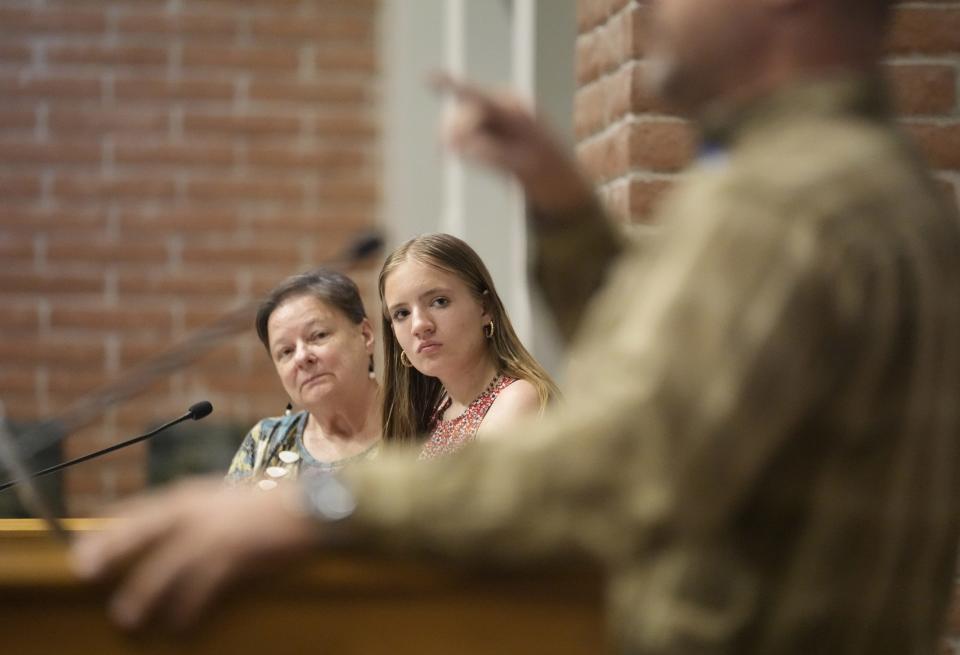
Their work has attracted local and national attention.
“They were frustrated at not having their voice heard in terms of what they wanted their own school district to know about their feelings about what they needed, and also the community at large,” said the Rev. Martha Seaman, a deacon in the Episcopal Diocese of Arizona who is president of the Valley Interfaith Project, which recently teamed up to work with the students.
Several Valley Interfaith Project leaders met with the students “and the stories just started to pour out of everybody, including our own leaders, who shared stories about mental health challenges in their families,” Seaman said.
“We’re pretty sure now based on the stories that we have heard that there's more out there that we need to do,” she said.
The Chandler Unified District is taking action, too.
McPherson said, “I will say the district turned a corner because the children just kept at it.”
Arizona kids had nearly 2,500 ER visits for suicide attempts in 2021
Kids ages 17 and younger in Arizona comprise a small percentage of suicides in the state every year — typically about 3% to 4%, state data shows. Through April 7, a state suicide dashboard shows there were 10 this year. Last year, there were 46. In 2021, there were 44.
A database of youth suicides in Maricopa County going back to 2013 shows the youngest child to die by suicide in Arizona’s most populated county in the past decade was 9. The average age of the 29 Maricopa County youths who took their own lives in 2022 was 15, the data shows.
Many more Arizona kids try to take their own lives. Over the past three years, kids ages 17 and younger have been the age group most likely to visit Arizona emergency rooms for suicide attempts, according to data from the Arizona Department of Health Services dating to 2020.
In 2021, people ages 17 and younger comprised 30% of all suicide attempts that ended up in Arizona emergency rooms, the data shows. In raw numbers, that works out to 2,464 such visits, or an average of nearly seven suicide attempts per day.
In 2022, the average number of suicide attempt visits for kids under 17 dropped to about five per day, which was still the highest level of any age group, the state data says.
Some of the kids who try to take their own lives end up at Phoenix Children’s Hospital, which last year began staffing its emergency department with psychiatric nurse practitioners because of a rising number of youths showing up needing mental health intervention, said John Brewer, who is the hospital system’s vice president of behavioral health and a psychiatric nurse practitioner.
The increased mental health needs had started before the pandemic, but COVID-19 accelerated demand, he said.
“The most common reason a patient is going to come to the ED with a mental health issue is either self-harm in a serious enough manner that they need to come in for medical treatment, suicidal ideation, or an actual suicidal gesture, attempt,” Brewer said.
Other mental health reasons kids may visit the emergency department include mood disorders that were exacerbated by stress, panic, anxiety, aggression, eating disorders or drug use.
“Kids’ lives got turned upside down pretty quickly. School is a massive social support, and all of a sudden they were doing that from home,” Brewer said. “Loneliness is a big contributing factor to a lot of depression and anxiety. When you stay home, it’s pretty easy to get lonely.”
In an ideal world, mental health crises would not be handled in emergency departments, which are often chaotic places handling problems such as major traumatic injuries, Brewer said.
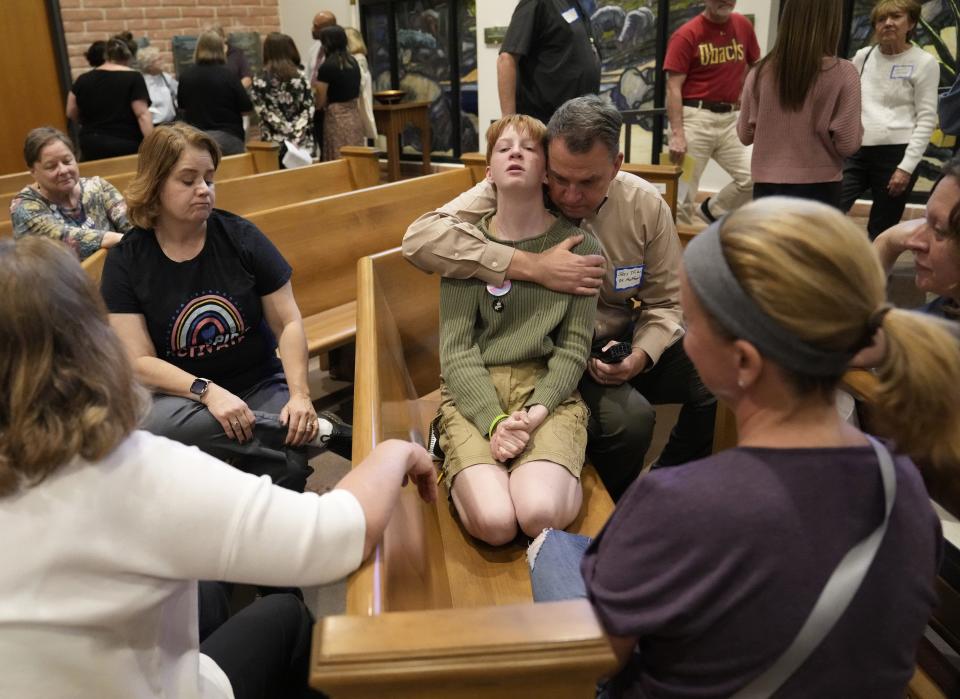
But not everyone who needs preventive care and early intervention gets it, and that’s true nationwide, not just in Arizona.
Among the reasons for that is a shortage of providers, which can leave families waiting for weeks and sometimes months to get an appointment.
To address that gap in care, Phoenix Children’s in 2018 launched a mental health program called The Bridge Clinic that expedites the treatment of kids who visit the ER for serious mental health issues, often related to suicidal thoughts. Patients in the program meet with a behavioral health provider as often as necessary — sometimes daily — as a “bridge” while long-term care with a community pediatric provider is arranged.
Most of the country, including Arizona, is experiencing a severe shortage of practicing child and adolescent psychiatrists, according to the American Academy of Child & Adolescent Psychiatry, which says Arizona has 175 child and adolescent psychiatrists for the estimated 1.6 million Arizonans who are under the age of 18.
Rapid population growth in Maricopa County is increasing the demand for providers.
“If there was a complete continuum of care that existed, then these kids wouldn’t end up in the ED,” Brewer said. “But the ED is definitely the lifeline, the 24/7 lifeline that’s going to be there. At the bare minimum, it’s going to keep kids safe, and that is what we want.”
COVID-19 grief: After 33,000 deaths, many Arizonans struggle with mental health
Teen Lifeline clinical director: COVID-19 'emotionally delayed' kids
Calls and texts to the Phoenix-based nonprofit Teen Lifeline more than doubled between 2016 and 2022, when the yearly number reached 43,363. And the age of the callers to the peer-to-peer hotline for teens is getting younger.
In 2012, 10% of calls to Teen Lifeline were from children under 13. By 2022, that was up to 28% of calls, the Teen Lifeline data shows. About 30% of the calls are related to suicidal thoughts and depression.
The number of calls has not leveled off, even though the COVID-19 pandemic is no longer as serious as it once was, Teen Lifeline clinical director Nikki Kontz said.
Kids had educational delays during the pandemic, but they had emotional delays, too, Kontz said.
Many kids missed out on developing skills during the pandemic away from the influence of adults, such as creating relationship boundaries with friends. That means some kids may be academically ready to go to college but emotionally they are struggling because of what they missed, she said.
“Our numbers have continued because honestly, stress hasn’t been reduced. Are they increasing as fast as they did? No. They just aren’t leveling out,” Kontz said. “It’s probably about two years that kids are emotionally delayed in terms of their distress tolerance, their ability to navigate negative feelings, their ability to negotiate with individuals who might create stress.”
What’s important is supporting kids and letting them know they are not alone, that they have a community that cares, she said. Sometimes all that’s needed is a kind word, she said.
A recent report from the U.S. Centers for Disease Control and Prevention, based on the national Youth Risk Behavior Survey found that more than half of LGBTQ+ students had recently experienced poor mental health and that 22% had attempted suicide in the past year.
And while the report found an overall increase in mental health challenges among all teens, girls fared worse than boys. Teen girls are experiencing record-high levels of violence, sadness and suicide risk.
More than half, or 57%, of U.S. teen girls, persistently felt sad or hopeless in 2021, which was double that of boys. It was the highest percentage reported over the past decade and up nearly 60% from 2011, according to the report.
Males are more likely to die by suicide, but females are more likely to attempt suicide, both national and state data shows.
Anna Mendoza, an 18-year-old senior at Casteel High School in Queen Creek, said she has felt “paralyzed by my own sadness.” Mendoza was a freshman in March 2020 when the pandemic began. She spent her sophomore year online. She isn’t part of Arizona Students for Mental Health, though she did speak at one of their events. She says the pressure the group has been putting on the Chandler school district is important and necessary.
Mendoza juggles school with a part-time job and has concerns about how she’ll pay for college. There are pressures about appearance, too, she said.
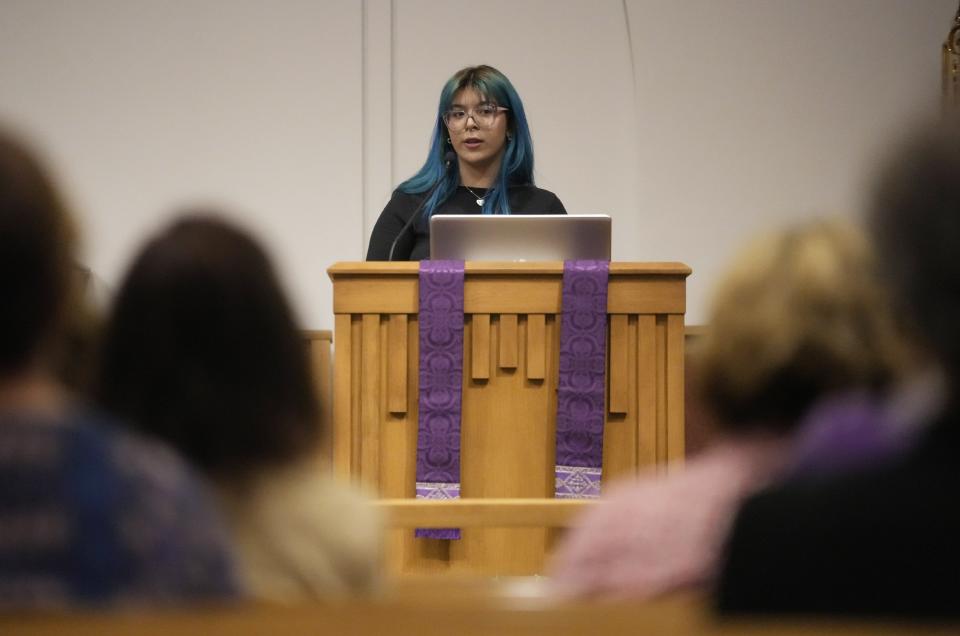
“Social media plays one of the bigger roles, just seeing the societal pressures to look a certain way and have a sense of individuality but not too much to the point where people ostracize you,” she said.
Alexander and her peers were distraught upon starting the school year when, in early August, another Chandler district student died by suicide. On Aug. 10 they implored the Chandler Unified School District governing board to allow them to hold a student-led town hall.
At least three more East Valley kids ages 17 and younger have died by suicide since the August death, Maricopa County records through Dec. 31 show. Two were in Chandler and one was in Mesa.
The town hall never happened, but the district recently created a student mental health advisory board and is planning a student mental health conference in September to kick off World Suicide Prevention Awareness Month.
'Nobody saw the signs I was struggling,' student says
Arizona Students for Mental Health on March 13 held what it called a Civic Academy on Youth Mental Health, which was a training workshop with the Valley Interfaith Project. The event instructed adults in the community, including Chandler Unified School District Associate Superintendent Craig Gilbert and district governing board President Jason Olive, about how to recognize the signs of suicide in kids.
The student group had invited all district board members to attend.
Maya Lehti, a 13-year-old San Tan Junior High School student who is Alexander’s cousin and deputy director of the student group, co-led the training portion of the Civic Academy, outlining the signs of suicide that parents, coaches, peers, teachers and other community members should watch for. Those signs include substance misuse, disrupted sleeping habits, withdrawing from people and activities, giving things away, missing school and speaking ill of the future.
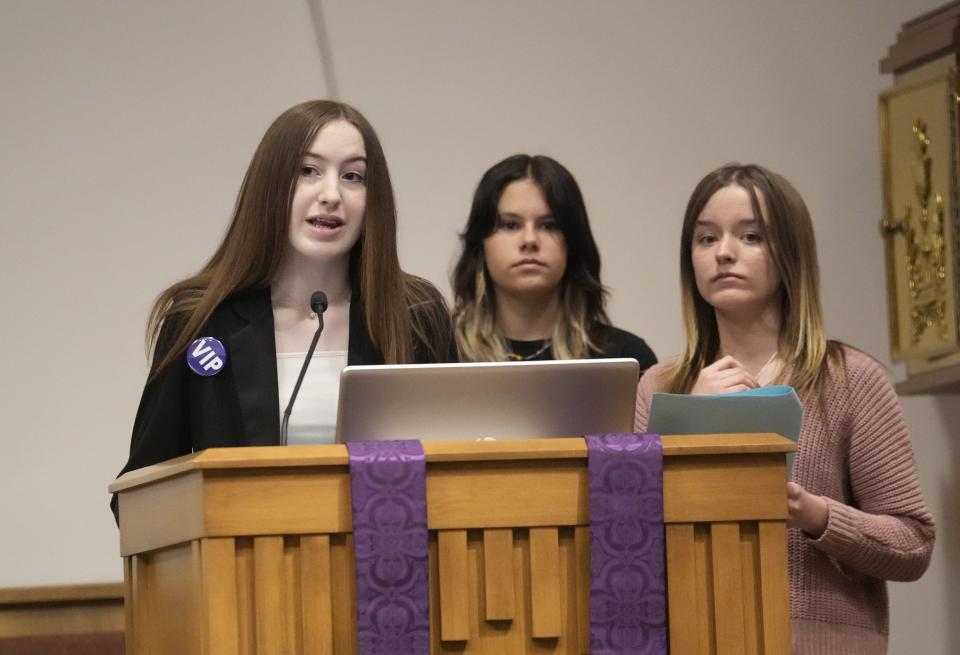
The way Alexander explains it, if kids are struggling with depression, feelings of isolation or other mental health problems, it’s much harder for them to learn and to do well in school, which is something she learned from her own experience.
Too often, teachers and other school officials are not paying attention, she said.
“My community took a really long time to realize that I needed help, and it was almost recognized too late,” Alexander told a crowd of about 125 at the event, at St. Matthew’s Episcopal Church in Chandler. “It took weeks of extensive research and waiting lists to find the help I needed. I had to switch to online school in order to receive treatment, and the changes this made to my life were huge.”
In an interview, Alexander said that her depression began in her sophomore year but became “unmanageable” when she was a junior. She was tired all the time and lost interest in the things she once loved, like playing tennis and spending time with her family. Her grades dropped and she started missing school, which could have been an opportunity for the school to intervene with a mental health check, she said.
“They called my mom. It was just kind of like a notice, like, ‘Hey your kid wasn't in school, make sure to call the attendance office and excuse them,’” Alexander. “Usually, it was just like a voicemail.”
Her experience is echoed by other members of Arizona Students for Mental Health, among them Sofia Borczon, a sophomore at Basha High School in Chandler who told the Civic Academy that the only reason she got help for her mental health struggles was because she reached out to her parents, not because anyone reached out to her. Like other members of Alexander’s group, Borczon wants the adults in kids’ lives to do better.
“When I struggled the worst, living just really felt like a burden to me,” Borczon, 16, said during the March 13 event. “My grades were slipping, I retreated from my friends, and I was just like never happy anymore. I felt like I was stuck in a miserable cycle with only one way out.”
Borczon said it took two years to get the help she needed.
“And I didn’t get help because people saw the signs I was struggling," she said. "Nobody saw the signs I was struggling. Not my parents, not my friends, nor any of my teachers. That’s why it’s so important that people know the signs.”
Lehti and Borczon said kids need validation and support. Parents and other adults don’t need to solve kids’ problems, but they do need to listen, they said.
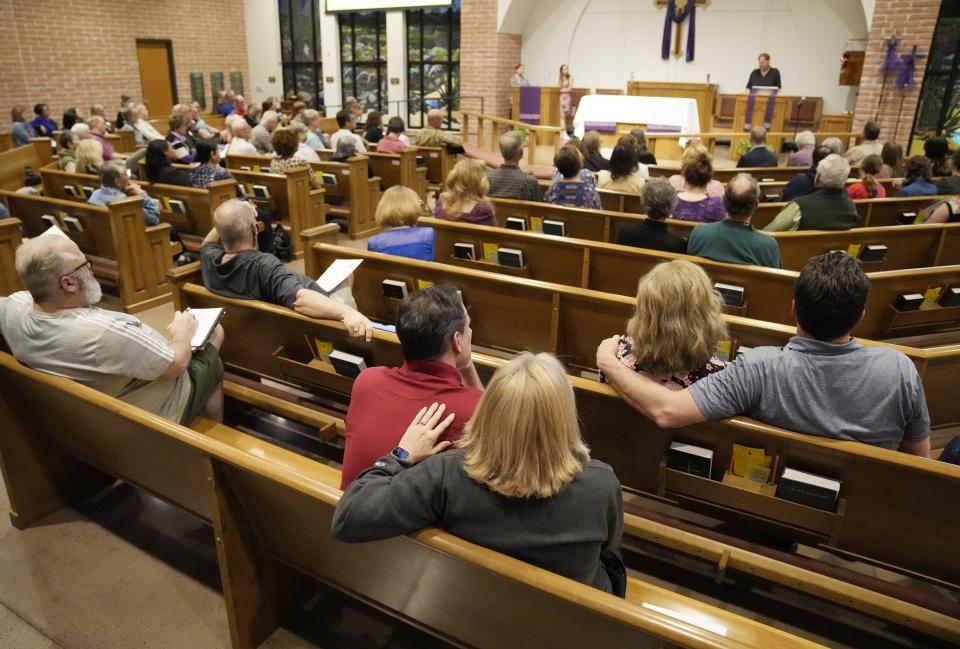
Doug Ferg, an East Valley high school mathematics teacher, told the Civic Academy about three of his students who had serious mental health issues.
One was a student in the gifted program, a senior getting ready to graduate and attend a major university on a full scholarship. The girl took Ferg aside one day and showed him her arms, which revealed that she had been severely cutting herself.
“It was a very loud shout for help,” said Ferg, who immediately notified a school social worker, a counselor and the chair of the gifted program.
The student got help in a psychiatric facility.
“No one prepared me for this when I went into teaching, but it’s something we all have to be familiar with,” he said. “Our students, our teens, need help.”
State of crisis: Arizona's mental health challenges
Chandler school district to open mental health center for students
Arizona Students for Mental Health see progress and believe some of it stems from the public pressure members have put on the district.
Chandler Unified officials say they are making strides in improving mental wellness for their students by, among other actions, incorporating a Teen Mental Health First Aid course into the 11th-grade curriculum, which teaches teens how to identify, understand and respond to signs of mental distress and substance use challenges among their friends.
District officials are planning to open a mental health center next to the campus of Perry High School in Gilbert, called the Hope Institute for Chandler Unified School District.
District officials say planning for the Hope Institute, which will provide evidence-based interventions for students with thoughts of suicide, predates the formation of Alexander’s group. The district eventually wants to open a second center. The centers will be only for district students and the first is expected to open for the 2023-24 school year, district spokesperson Stephanie Ingersoll wrote in an email.
And there’s clearly a need. In one semester alone, between July and December 2022, Chandler Unified School District social workers and school counselors say they completed 395 suicide assessments.
Those assessments are done for students with thoughts of suicide who in some way, shape or form, shared that they wanted to die, according to Brenda Vargas, director of the district’s counseling and social service team.
Arizona Students for Mental Health has “certainly made an impact,” Ingersoll wrote, and the district “will continue to take a proactive approach to prioritizing counseling and social services for our families and staff.”
Raising awareness about youth mental health is a joint effort that requires help from everyone, including staff, families and the community, she added.
More open discussion about suicide prevention and warning signs may have helped provide early intervention to Tyler Hedstrom, a 17-year-old San Tan Valley resident who was one of the five East Valley kids who died by suicide during the summer of 2017, said his mother, Sheila Hedstrom-Pelger.
Hedstrom, the drummer for Phoenix-based bands Anarbor and HeadStrum, was one week away from starting his senior year at Combs High School, which is in the J.O. Combs Unified School District, when he died.
After his death, Pelger-Hedstrom found out something she hadn’t previously known — months before his suicide, her son had at least twice been discovered sitting alone and crying in a dark band room at school. The friends who found him provided support, and a school official helped, too by talking with Tyler, Pelger-Hedstrom said, emphasizing that she doesn’t blame anyone.
In 2017, people weren’t talking about mental health the way they do now, she said.
“The day he died, I think, it was very impulsive; he was not planning to do it. But he had depression and anxiety that were building up over maybe months or years,” she said.
“And nobody saw the signs.”
Working with a mental health professional can help teenagers develop coping skills to at least reduce the risk of reaching a crisis level, Brewer said. One positive is that teens now, unlike previous generations, do not tend to see a stigma in talking about mental health problems.
“It’s definitely changing. This younger generation that’s coming up is not afraid to talk about the things that they are struggling with. Reaching out for help is a much more common thing for them to do,” he said. “That is a good thing. It’s super exciting.”
Alexander got treatment for her mental health struggles by attending an intensive outpatient program three times per week. She is set to graduate this year and is taking a gap year before deciding what’s next. She expects that Arizona Students for Mental Health will continue its work.
“We’ve worked really hard, and I don’t think we’re going to stop.”
Free mental health resources are available to anyone in Arizona. A statewide mental health crisis line is available at 844-534-HOPE (4673). Another resource for 24/7 help is to dial 988. The 988 Suicide and Crisis Lifeline in July replaced the National Suicide Prevention Lifeline. Teen Lifeline is for kids to call and get free, confidential and anonymous help from trained peers at 602-248-8336 (TEEN) or 800-248-8336 (TEEN) outside of Maricopa County.
Reach health care reporter Stephanie Innes at Stephanie.Innes@gannett.com or at 602-444-8369. Follow her on Twitter @stephanieinnes.
This article originally appeared on Arizona Republic: Arizona youth suicides are up, and student group is trying to help

